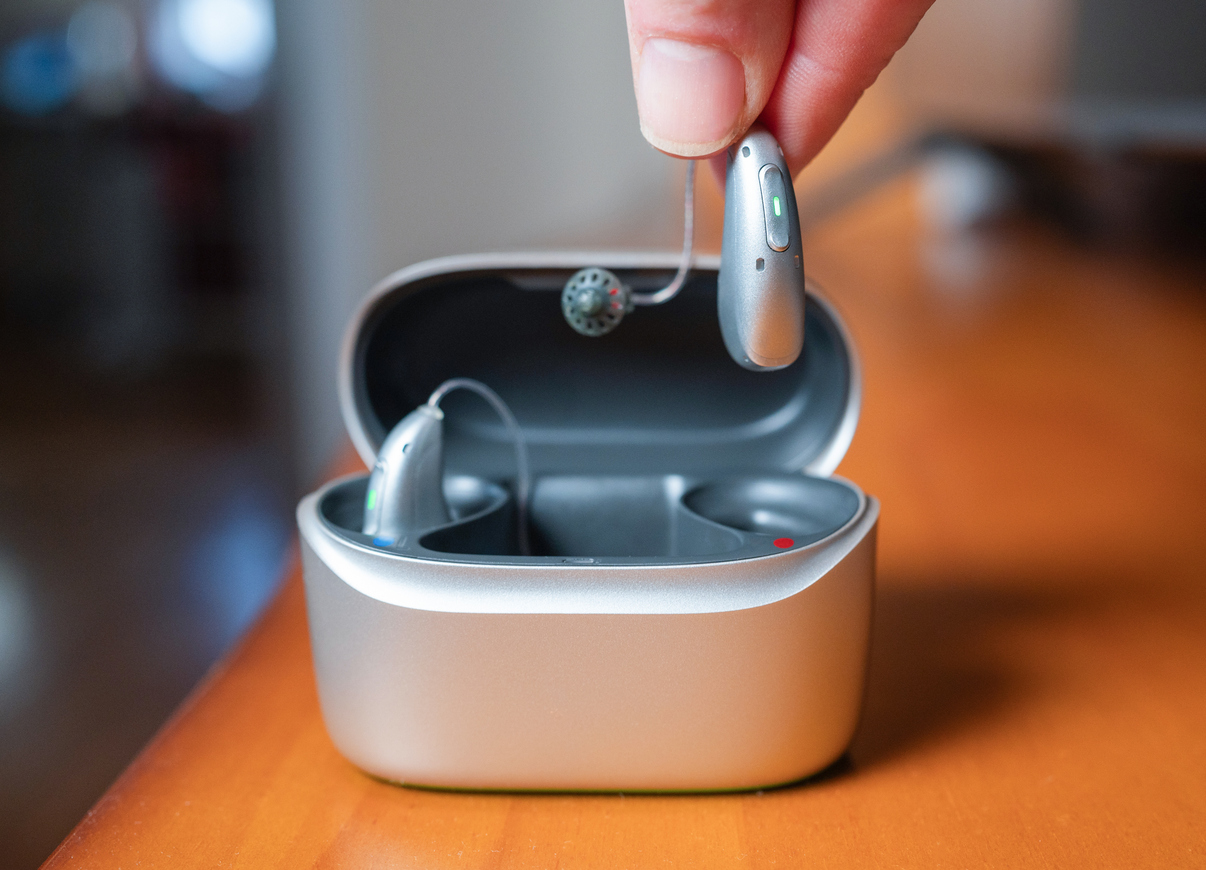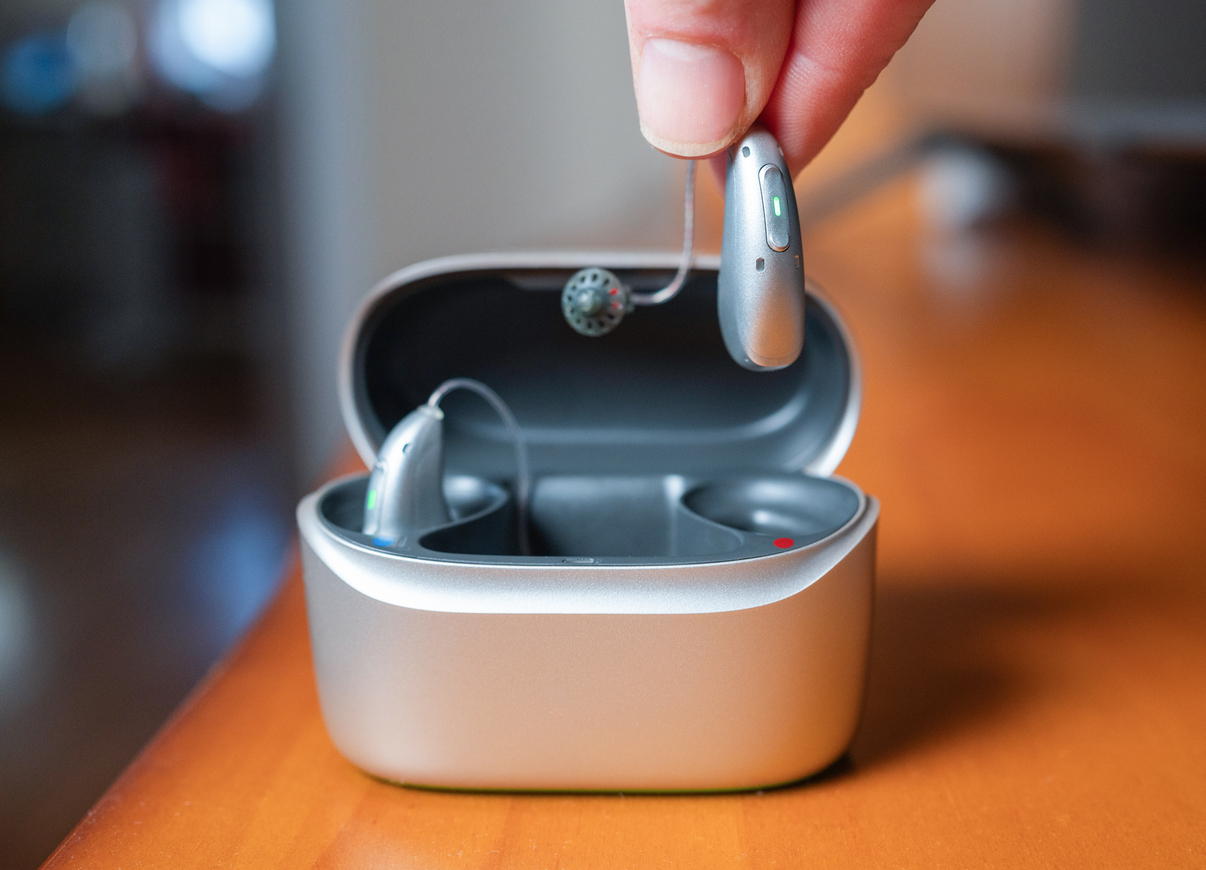

NHS commissioners and audiology providers must work together to ensure people with hearing loss are offered rechargeable hearing aids. This will:
- Help the NHS meet its net zero goal
- Support the use of advanced technology in healthcare
- Improve safety and ease of use for vulnerable patients and those with dexterity and mobility issues
Each year the NHS dispenses at least 250 million single-use hearing aid batteries, leading to unnecessary waste and avoidable environmental consequences. Simply switching to rechargeable hearing aids will more than halve the environmental impact of single-use hearing aid batteries [1].
Just 2% of hearing aids provided on the NHS are rechargeable, compared to 89% of self-funded hearing aids [2]. This is because many rechargeable hearing aids often come with more up-to-date technology, which is the preferred choice for patients who self-fund. Offering rechargeable hearing aids to NHS patients would enable all patients to benefit from advanced technology (not just those who can pay) and widen patient choice.
Offering rechargeable hearing aids to NHS patients would also support elderly patients, children and their parents. They would no longer need to make the effort to travel to clinics to replace batteries or require additional support to help change small hearing aid batteries due to dexterity and mobility problems. Rechargeable hearing aids would also reduce the risk of children ingesting button batteries which can pose a serious risk to health [3-4].
Additional guidance
When commissioners transition to rechargeable hearing aids it is important to ensure services are funded fairly so that they can provide safe and effective care. To support NHS commissioners and providers in England we have produced Going green: rechargeable hearing aids.
Contact us
Work with us to deliver change - email [email protected]
References
[1] Chaojun Li, 2021, Comparison of battery solutions for hearing aid devices, https://www.signia-pro.com/en-au/blog/global/2021-12-14_comparison-of-battery-solutions-for-hearing-aid-devices/ - accessed 21 January 2025
[2] BIHIMA, Market statistics Q2 2024, Rechargeable products, https://www.bihima.com/wp-content/uploads/2024/07/Q2-2024-STATS-BY-QTR.pptx - Q2 2024, 2.1% of NHS hearing aids dispenses were rechargeable compared to 88.9% of self-funded hearing aids - accessed 21 January 2025
[3] Children's Hospital of Philadelphia, Lithium "Button" Batteries https://www.chop.edu/centers-programs/injury-prevention-program/lithium-button-batteries - accessed 21 January 2025
[4] NHS, 2022, NHS surgeons safety plea after surge in kids swallowing dangerous objects, https://www.england.nhs.uk/2022/12/nhs-surgeons-safety-plea-after-surge-in-kids-swallowing-dangerous-objects/ - accessed 21 January 2025
11 August 2025
29 October 2021
Back to list
 Your hearing and aural health
Your hearing and aural health  Commissioners and Policymakers
Commissioners and Policymakers  Member support and guidance
Member support and guidance News and views
News and views
 Hearing map
Hearing map
